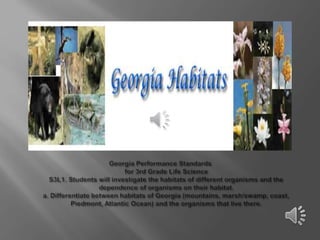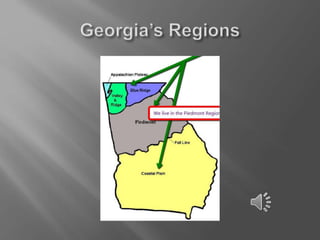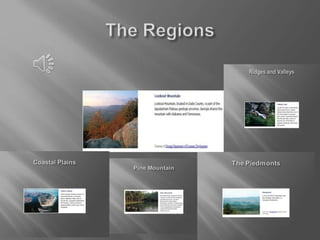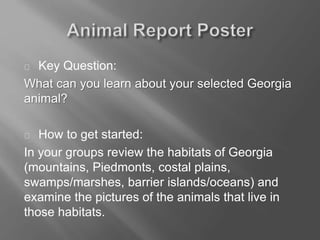Georgia Habitats Project for 3rd Grade Students
- 4. Key Question: What can you learn about your selected Georgia animal? How to get started: In your groups review the habitats of Georgia (mountains, Piedmonts, costal plains, swamps/marshes, barrier islands/oceans) and examine the pictures of the animals that live in those habitats.
- 5. Each student has been given an animal to research and to become an expert on that particular animal. You are to learn all about our animal including where it lives (region), what it eats, what features it has to help it survive, etc. Please keep a record in your journal of all the resources used to get your information in your science journal.
- 6. Habitat Life Appearance Features Important Facts
- 7. Please be prepared to discuss the following questions. Use thinking maps to compare and contrast the habitats and the animals. How do the habitats differ (compare and contrast). How is your animal like some of the other animals you have heard about? How is it different? Which of these animals described do you find the most interesting? What are you wondering now?







